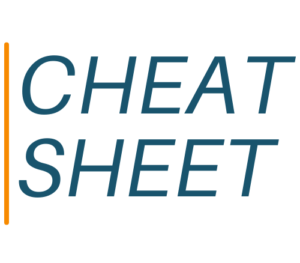AI Cracks the Code on WSJ CIO Journal
You’ve always known that it’s tough to crack the WSJ CIO Journal. Now thanks to Google Gemini 2.5 Pro and Claude Sonnet 4, you now know exactly why, and exactly what you can do about it.
You’ve always known that it’s tough to crack the WSJ CIO Journal. Now thanks to Google Gemini 2.5 Pro and Claude Sonnet 4, you now know exactly why, and exactly what you can do about it.
In 1991, back when I was running PC Week, I once flew to New York to meet to with the big boss, Ziff-Davis CEO Eric Hippeau.
The WSJ this week launched CEO Brief, a newsletter designed to inform readers, and to attract new members to the WSJ Leadership Institute. This organization
Now that it has sold off its classifieds business, the owner of Politico and Business Insider will go shopping for more titles. Don’t be surprised

Two of the world’s most powerful business publishers are out to refine themselves as the impact of generative AI approaches.

If tech journalism had its own 30 Under 30 list, Belle Keni Lin certainly would be on it. The 28-year-old WSJ reporter started her career as a marcom intern, first at Dropbox and later at Fleetsmith, an IT software company later acquired by Apple.

You may know James Rundle as the bass player in the NY-based punk rock band called Something Bitter. James is best known as a reporter for the WSJ Pro cybersecurity vertical.

More often than not, studying a reporter’s copy reveals much about the man or woman who wrote it. That’s just not the case with WSJ CIO Journal reporter Isabelle Bousquette.

Most PR pros categorize targets by beat, then by publication. There’s another way — by experience. The rookies are happy to be where they are. And quite often they are friendly toward PR, especially when you appear to know a little bit about them.

Born and raised in Canada, Suman Bhattacharyya logged time at Digiday and Ad Age before landing in late 2021 at the Wall Street Journal’s CIO Journal. Seven months later Suman became a freelancer, writing primarily for a handful of Industry Dive titles as well as the WSJ’s Journal Reports.
YOUR ACCOUNT
FRIDGE NOTES
The day is coming that you will not be able to avoid framing the targets in terms of red or blue. So far you’ve been able to do that. Those days are coming to a close: large swaths of “the audience” are headed in this direction. If you don’t believe it, read this from Bloomberg. You will never see better reporting than this.
Superb reporting from Business Insider on what comes after Google Search. All the experts quizzed. The gist: these technologies and techniques are borderline mythical at this point.
In the latest installment of Sound Thinking...David Strom, a well-known IT reporter and security expert, discusses the threat of AI tricking security systems and luring them to catastrophe. What will that mean to editors? When will it happen? It’s not an if, it’s a when.
Good vision here from Jay Lauf. Interestingly, Jay suggests that B2B publishing will become a service business to B2B pros, providing value directly to individuals and organizations. Static content is dying very quickly. This is the point of the analysis from this great media organization.
America can’t read anymore. The good news: advertisers can advertise against different kinds of emotion in the copy. So even if the numbers of readers drop, there are more ways to attract ads. So perhaps the bad news will get cancelled out by the good. Sam Whitmore and David Strom discuss.
Can you imagine not needing to be a human being to be a superstar? You may remember Max Headroom. There’s plenty of examples of technology personas, but AI is a different world altogether. Is there a tech media angle to this item? Not really, but here she is — Xania.